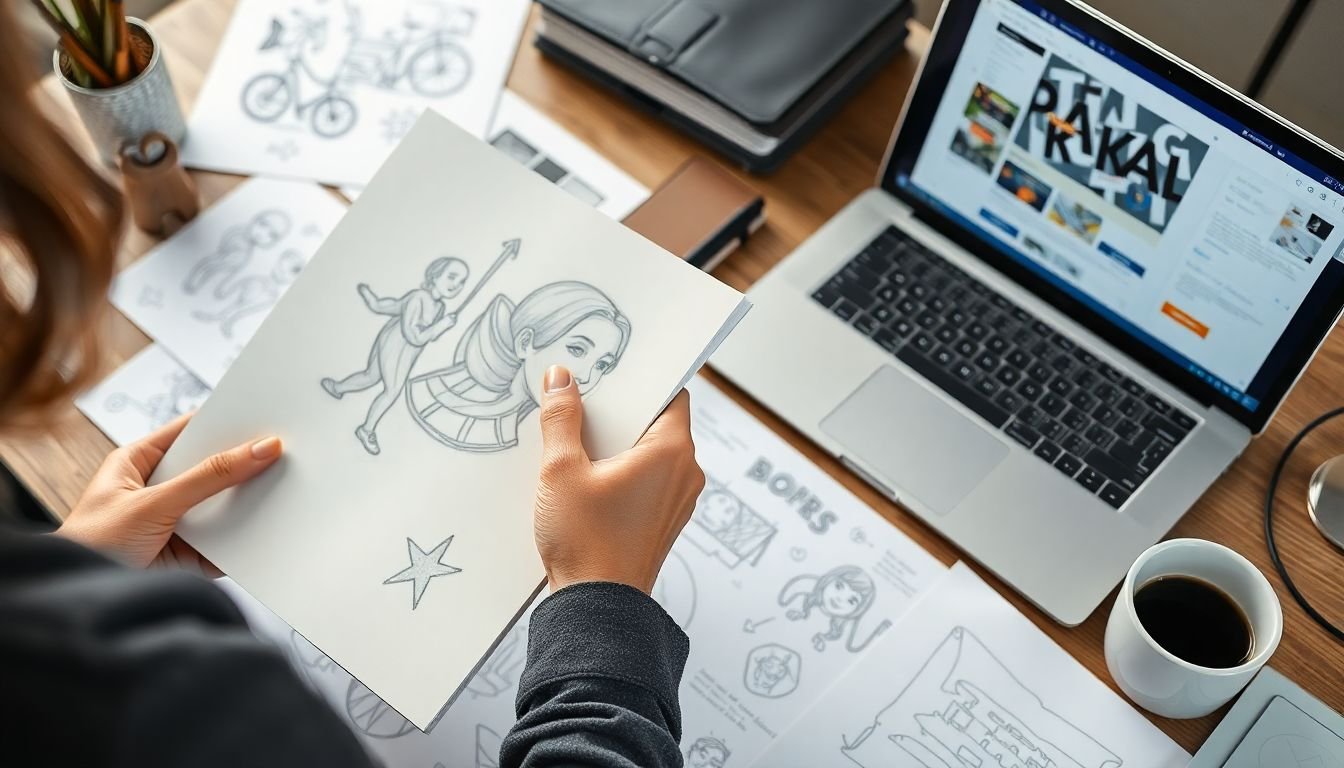
Table of Contents
Have you ever wondered why some graphic designs captivate your attention more than others? The secret often lies in the strategic use of illustration. Illustration, when artfully integrated into graphic design, can transform a mere visual into a compelling narrative, a silent storyteller that engages audiences on a deeper level. But when and how should graphic designers incorporate illustration into their work? This article aims to demystify this creative process, guiding you through the intricacies of visual storytelling and helping you harness the power of illustration to elevate your graphic design projects.
First, let’s agree on one thing: in today’s visually saturated world, standing out is not just an advantage, it’s a necessity. According to a study by MIT, the human brain processes visuals 60,000 times faster than text. This means that if your graphic design doesn’t immediately grab attention, it’s likely to be overlooked. Illustration, with its unique ability to convey complex ideas quickly and emotionally, can be your secret weapon in this visual arms race.
Now, let’s make a promise. By the end of this article, you will not only understand the why behind using illustration in graphic design but also the how. We’ll delve into the different types of illustrations, their applications, and best practices. We’ll explore real-world examples and case studies, providing you with a practical roadmap to incorporate illustration into your design workflow.
But before we dive in, let’s set the stage with a compelling question: Have you ever looked at a design and thought, ‘I wish I could understand this better’? Or perhaps, ‘I wish this design could evoke more emotion’? Illustration can address these pain points, making your designs not just visually appealing, but also intellectually stimulating and emotionally resonant. So, are you ready to unlock the full potential of your graphic design? Let’s embark on this creative journey together.
Unlocking the Power of Illustration in Graphic Design: When and How to Use It
In the vibrant world of graphic design, illustration often takes a backseat to photography and typography, but it’s high time we unlock its full potential. Illustration, with its boundless creativity and versatility, can breathe life into designs, convey complex ideas, and evoke emotions in ways that other visual elements can’t. When should you use it? Illustration shines in scenarios where you need to explain a process, tell a story, or add a touch of whimsy. It’s perfect for infographics, branding, and editorial design. But remember, less is often more. A single, well-placed illustration can pack a punch, while too many can clutter a design. How to use it? Start by understanding your audience and the message you want to convey. Then, choose an illustration style that complements your design and resonates with your viewers. Whether it’s flat design, watercolor, or something entirely unique, consistency is key. Lastly, don’t forget to optimize your illustrations for different platforms and resolutions. After all, a pixelated masterpiece is no masterpiece at all. So, go ahead, unlock the power of illustration. Your designs will thank you.
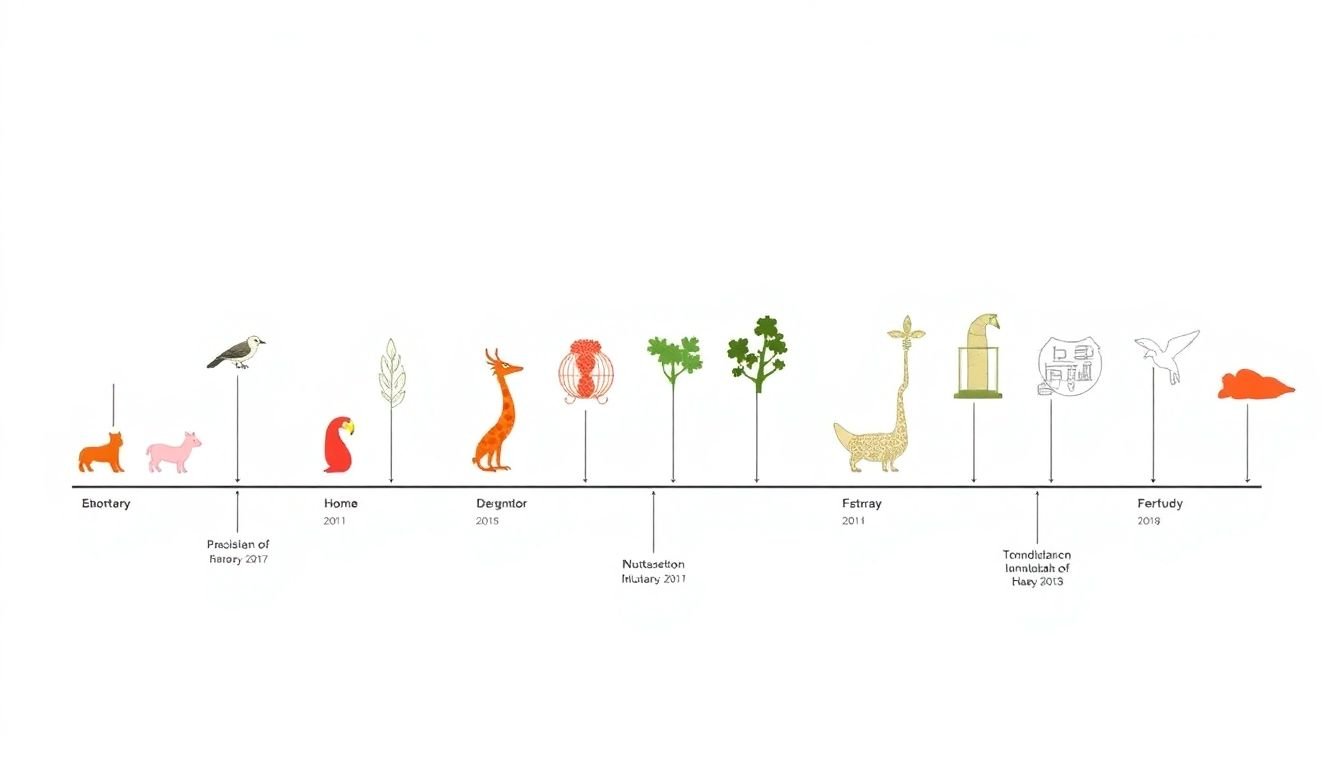
The Role of Illustration in Graphic Design
Illustration, a visual art form that combines images and text, plays an indispensable role in graphic design, enriching its narrative power and enhancing its ability to communicate complex ideas and emotions. The history of illustration in graphic design can be traced back to the late 19th century, with the advent of the Art Nouveau movement, which emphasized decorative, stylized illustrations. However, it was the mid-20th century, with the rise of advertising and publishing, that illustration truly came into its own, becoming a vital tool for visual storytelling. Illustrations serve as visual problem solvers in graphic design, translating abstract concepts into tangible, relatable images. They can simplify complex data, making it more accessible and engaging. For instance, an infographic illustrating climate change data would be far more comprehensible with accompanying illustrations than with raw numbers alone. Moreover, illustrations can evoke emotions, creating a connection with the viewer. A well-crafted illustration can inspire joy, provoke thought, or even stir anger, thereby making the design more impactful. Illustrations also play a crucial role in narrative-driven designs. They can create a visual narrative, guiding the viewer’s eye through a design and controlling the pace at which information is absorbed. In a children’s book, for example, illustrations work in tandem with text to create a compelling story, with each page turning revealing a new visual element that propels the narrative forward. Furthermore, illustrations can add a unique, personal touch to graphic design. They can reflect the designer’s style, cultural background, and personal experiences, making the design more authentic and relatable. This is particularly evident in branding, where illustrations can help create a distinctive visual identity for a company or product. In conclusion, illustration is not just an aesthetic element in graphic design; it is a powerful tool that enhances visual storytelling, communicates complex ideas, and evokes emotions. Its role in graphic design is as significant today as it was a century ago, and its future looks equally promising, with digital illustration tools opening up new avenues for creativity and expression.
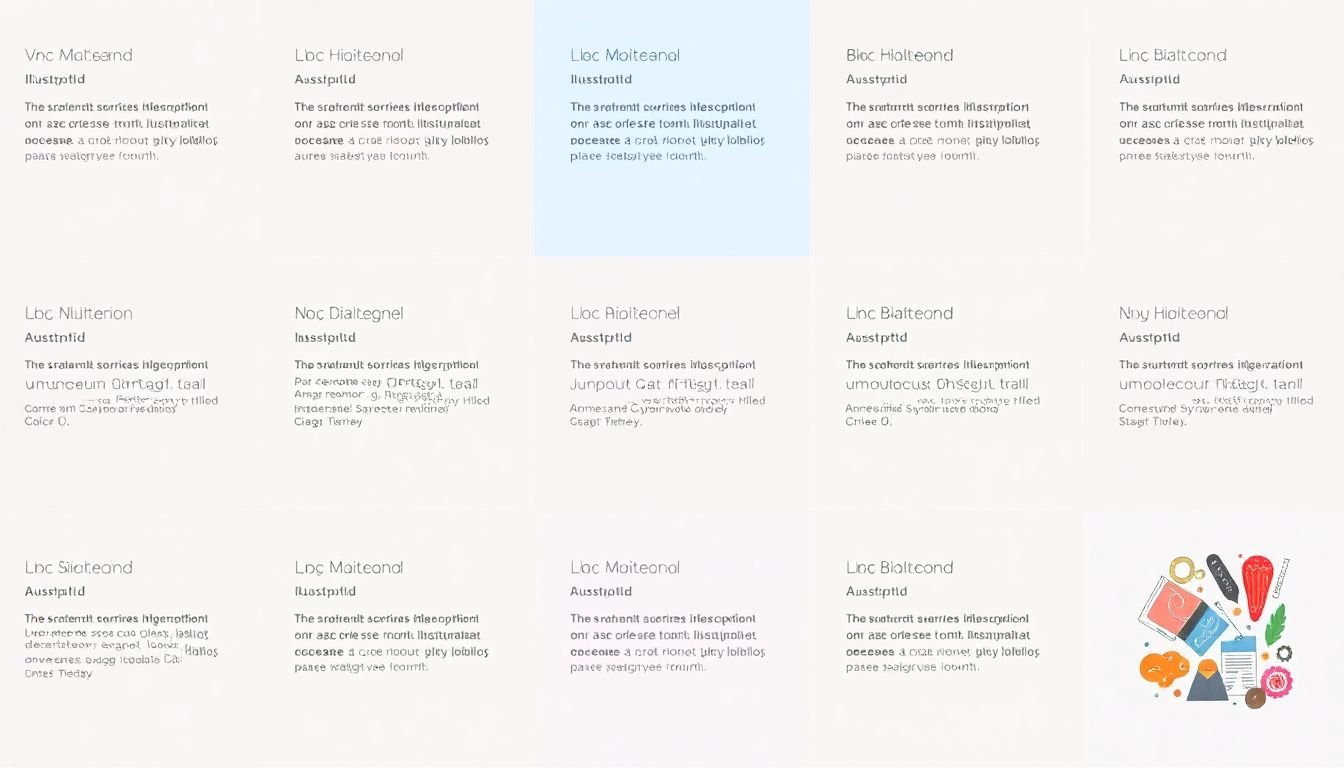
Understanding Different Types of Illustrations
Illustrations, in the vast realm of graphic design, come in a myriad of styles, each with its unique charm and purpose. Let’s delve into four prominent types and explore their applications.
Flat Design is a minimalist approach that emphasizes simplicity and functionality. It’s characterized by clean lines, bright colors, and a lack of gradients or textures. This style is perfect for user interfaces, icons, and infographics. It’s easy to understand and navigate, making it a favorite in web and app design. For instance, the flat design used in Windows 10’s interface is a testament to its usability.
Hand-Drawn Illustrations bring a personal, organic touch to designs. They’re often used in branding, packaging, and advertising to convey a sense of authenticity and uniqueness. Think of the whimsical, hand-drawn logos of brands like Airbnb or the playful, sketch-like illustrations in children’s books.
Digital Illustrations leverage advanced software to create intricate, detailed pieces. They’re versatile and can mimic traditional mediums like watercolor or oil paint, or create entirely new styles. This type is often used in advertising, gaming, and film. For example, the vibrant, detailed illustrations in animated movies like ‘Spider-Man: Into the Spider-Verse’ are a result of digital illustration.
Realistic Illustrations strive for photographic accuracy, often using complex shading and lighting techniques. They’re used in fine art, scientific illustration, and product design. For instance, the detailed, realistic illustrations in medical textbooks help students understand complex biological concepts.
Each style has its place and purpose. The choice depends on the message you want to convey, the audience you’re targeting, and the medium you’re using. Understanding these types helps designers create illustrations that not only look great but also serve their purpose effectively.

Illustration vs. Photography in Graphic Design
In the vibrant world of graphic design, illustration and photography often take center stage, each bringing its unique charm and functionality to the table. Let’s delve into the comparison of these two visual powerhouses, exploring their strengths, weaknesses, and the scenarios that might dictate the choice between them.
The first act in our comparison, illustration, is a versatile performer, capable of playing a wide array of roles. Illustrations, born from an artist’s imagination, can depict anything from whimsical creatures to complex abstract concepts. They offer unparalleled flexibility, allowing designers to create custom, unique visuals that perfectly align with their brand or message. Illustrations can evoke emotions, tell stories, and capture attention in ways that photographs often cannot. However, this flexibility comes with a potential downside. Illustrations can be time-consuming to create, and their style can sometimes feel less authentic or relatable than a photograph.
Now, let’s turn our spotlight onto photography. Photography, with its roots in reality, offers a different set of strengths. It provides a sense of authenticity and immediacy that illustrations can’t quite match. Photographs can capture fleeting moments, evoke strong emotions, and convey complex narratives in an instant. They are also quicker to produce than illustrations, making them a practical choice for tight deadlines. However, photography’s strength is also its weakness. Its reliance on reality can limit its versatility. What you see is what you get, and sometimes, that might not align perfectly with your design vision.
So, when to choose one over the other? Illustrations shine in scenarios where you need to convey complex, abstract, or fantastical concepts. They are perfect for branding, where a unique, consistent visual language is crucial. On the other hand, photography excels in capturing real-life moments, conveying emotion, and adding a touch of authenticity to your design. It’s ideal for editorial design, advertising, and social media content. Ultimately, the choice between illustration and photography depends on your design goals, timeline, and the story you want to tell. In many cases, they can also work beautifully together, each enhancing the other’s strengths. After all, in the world of graphic design, variety is the spice of life.
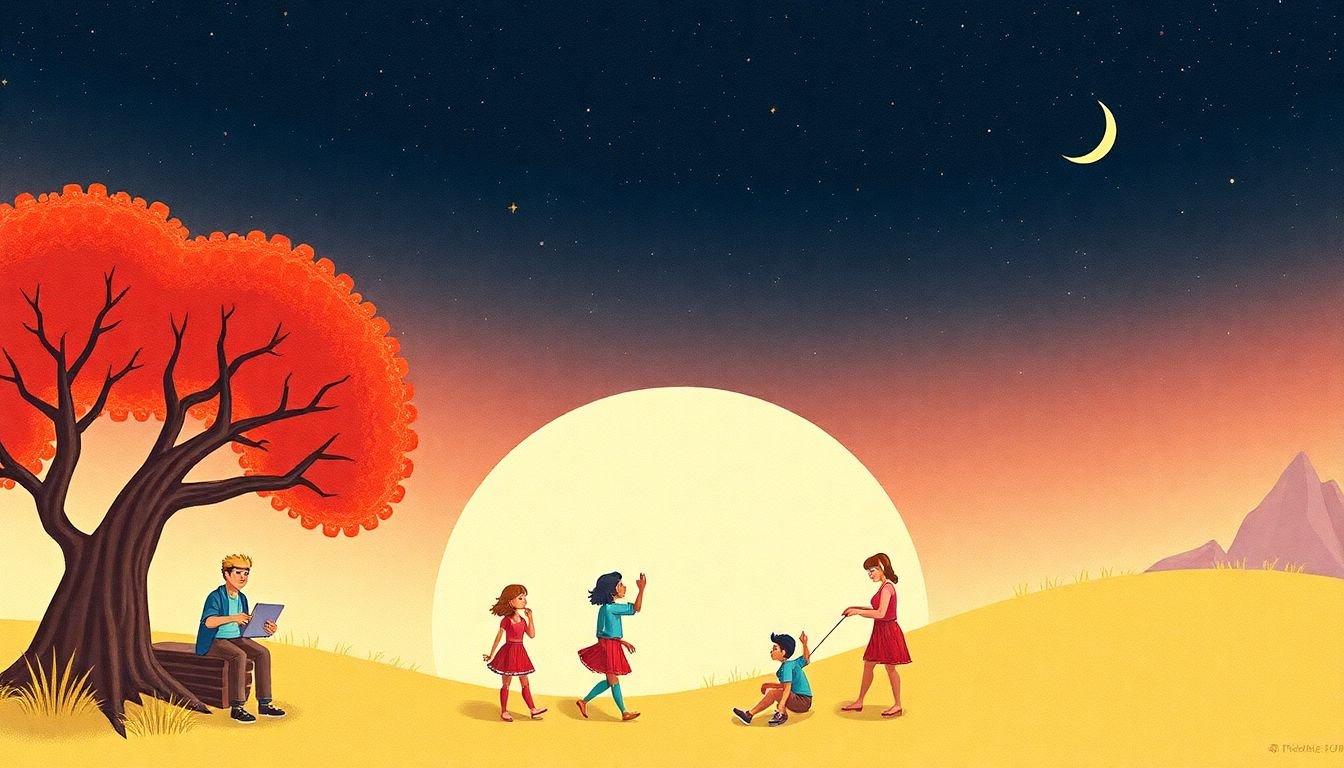
The Art of Storytelling with Illustration
In the grand tapestry of human communication, few mediums are as powerful and versatile as the art of storytelling. When illustrations are woven into this narrative fabric, they create a rich, immersive experience that transcends language barriers and engages audiences on a profound emotional level. This is the art of storytelling with illustration, a craft that graphic designers have honed to perfection.
The power of visual storytelling lies in its ability to convey complex ideas and emotions with a single image. Take, for instance, the work of Swiss graphic designer Josef Müller-Brockmann. His minimalist, geometric designs, such as the iconic poster for the 1964 Olympic Games, tell a story of unity, strength, and harmony through simple, bold shapes and colors. The illustration doesn’t just depict the event; it embodies its spirit, evoking a sense of pride and patriotism in the viewer.
Illustrations can also create narratives through sequential art, as seen in comic books and graphic novels. The intricate panels and speech bubbles in Art Spiegelman’s ‘Maus’ don’t just depict the Holocaust; they immerse the reader in the harrowing experience, evoking a range of emotions from horror to humor. The illustrations here are not just accompaniments to the text; they are the text, driving the story forward and giving it depth and nuance.
Moreover, illustrations can engage audiences by inviting them to participate in the storytelling process. Interactive infographics, for example, use visuals to guide users through complex data sets, encouraging them to draw their own conclusions and create their own narratives. The ‘Wind Map’ by Fernanda Viégas and Martin Wattenberg is a prime example of this. The interactive illustration of wind patterns across the United States not only educates but also engages, allowing users to explore the data and create their own stories.
In conclusion, the art of storytelling with illustration is a potent tool in the graphic designer’s arsenal. It can create emotions, engage audiences, and convey complex ideas with stunning clarity. Whether it’s a simple poster or an interactive infographic, successful visual storytelling transforms passive viewers into active participants, drawing them into the narrative and leaving a lasting impression.
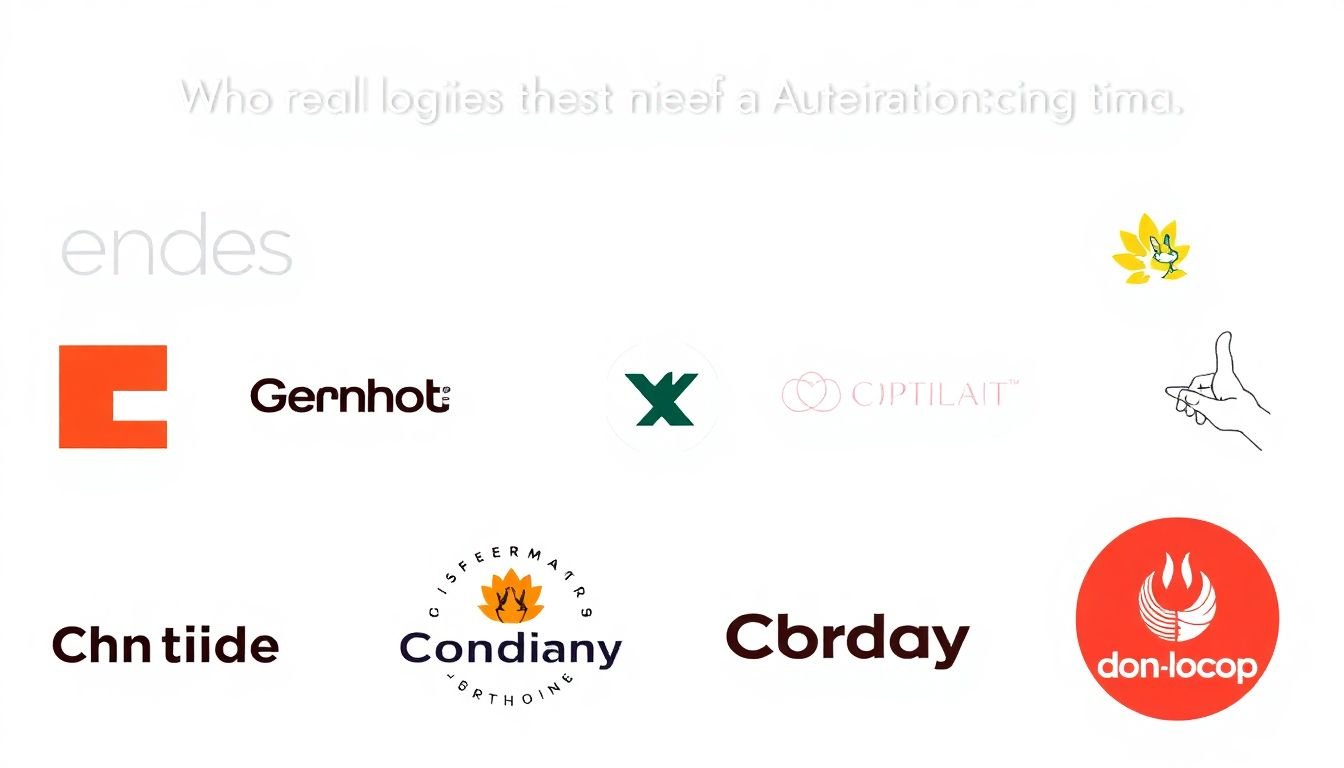
Incorporating Illustration into Branding
In the vast landscape of branding, illustrations serve as a powerful tool to differentiate and fortify a brand’s identity. They possess an innate ability to captivate audiences, evoke emotions, and create lasting impressions. By incorporating illustrations into branding, companies can foster a unique and memorable connection with their target audience.
Illustrations, when strategically employed, can communicate a brand’s values, personality, and story in a visually engaging and accessible manner. They transcend language barriers, making them an excellent choice for global brands. Moreover, illustrations can lend a brand a distinctive look, setting it apart from competitors.
Several brands have harnessed the power of illustration to great effect. Take, for instance, Airbnb. The home-sharing giant revamped its logo in 2014, replacing its wordmark with a stylized ‘A’ made of various symbols representing different aspects of travel. This illustrative approach not only made the logo more visually appealing but also told a story about the brand’s mission.
Another notable example is Mailchimp. The email marketing platform uses playful, quirky illustrations to great effect on its website and marketing materials. These illustrations, which often feature the brand’s mascot, Freddie the chimp, humanize the brand and make complex concepts like email marketing more approachable.
To incorporate illustrations into branding effectively, consider the following steps:
- Define your brand’s personality and values. Illustrations should reflect and reinforce these attributes.
- Identify your target audience. Illustrations should appeal to and resonate with them.
- Develop a consistent visual style. This could be a specific art style, color palette, or theme that becomes synonymous with your brand.
- Integrate illustrations across all touchpoints. This includes your logo, website, marketing materials, and social media platforms.
- Monitor and evolve. Branding is an ongoing process. Regularly review and update your illustrations to ensure they remain relevant and effective.
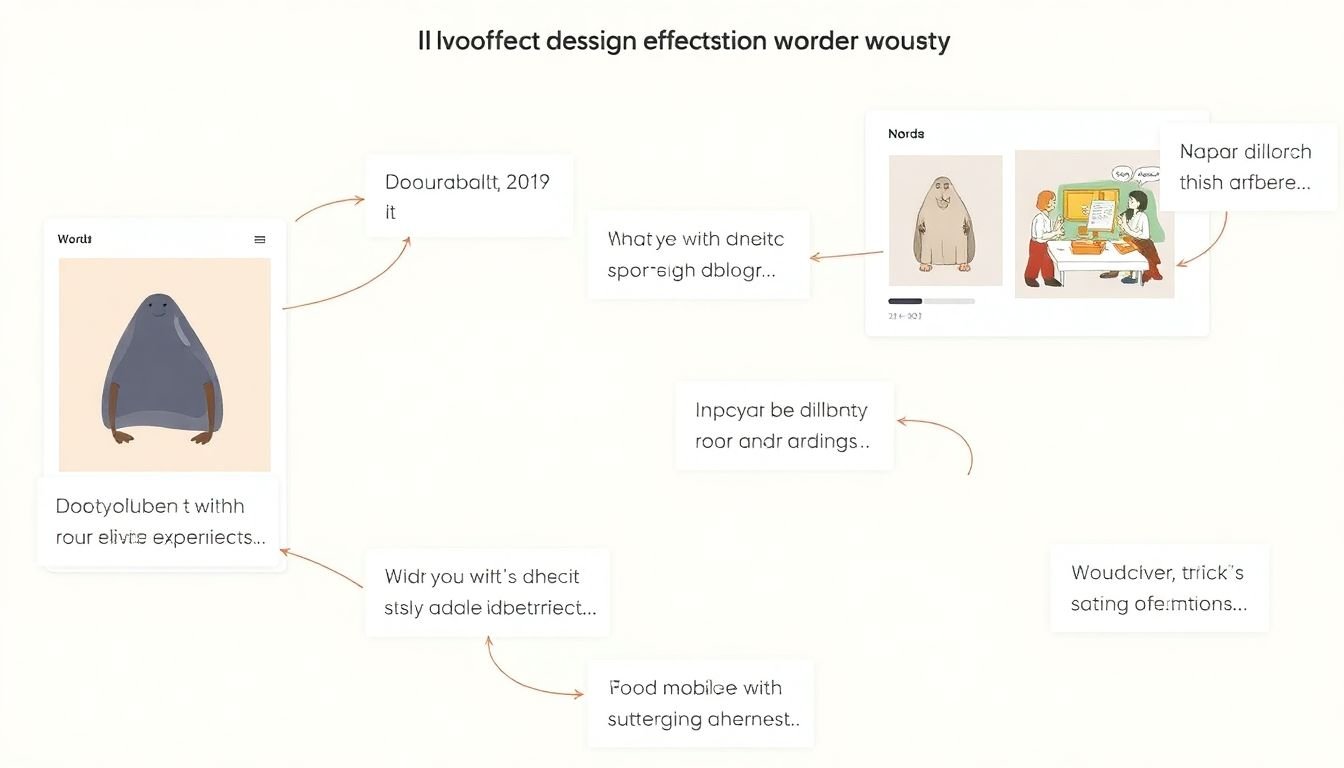
Illustration in UI/UX Design
In the vibrant world of UI/UX design, illustration serves as a powerful tool that transcends mere aesthetics, weaving a tapestry of functionality, engagement, and delight. Illustrations, when integrated thoughtfully, can significantly enhance user interaction, navigation, and the overall user experience. Let’s delve into the multifaceted role of illustration in UI/UX design.
Firstly, illustrations play a pivotal role in enhancing user engagement. They can captivate users’ attention, making them more likely to interact with the interface. Illustrations can tell stories, evoke emotions, and create a sense of connection with the user. For instance, a well-placed illustration can guide users through a complex process, breaking down information into digestible chunks. This is particularly useful in onboarding processes, where a series of illustrations can guide new users, making them feel more at ease and understood.
Secondly, illustrations can greatly improve navigation within an interface. They can act as visual cues, guiding users through the interface and helping them understand its layout and functionality. Icons, for example, are a form of illustration that can simplify complex actions into easily recognizable symbols. They can also be used to create visual hierarchies, drawing users’ attention to important elements or actions. Moreover, illustrations can be used to create consistent design patterns, making the interface feel more cohesive and intuitive to navigate.
Lastly, illustrations can greatly enrich the overall user experience. They can create a unique and memorable identity for a product, setting it apart from competitors. Illustrations can also reflect a brand’s personality, making the interface feel more human and approachable. They can also be used to create a sense of playfulness and delight, making the user experience more enjoyable. For example, micro-interactions
- small, animated illustrations that respond to user actions
- can create a sense of satisfaction and feedback, making users feel more connected to the interface.
In conclusion, illustration is not just a decorative element in UI/UX design. It is a versatile tool that can improve user engagement, navigation, and the overall user experience. When used thoughtfully and strategically, illustrations can transform an interface from a mere collection of screens and buttons into a dynamic, engaging, and delightful experience.
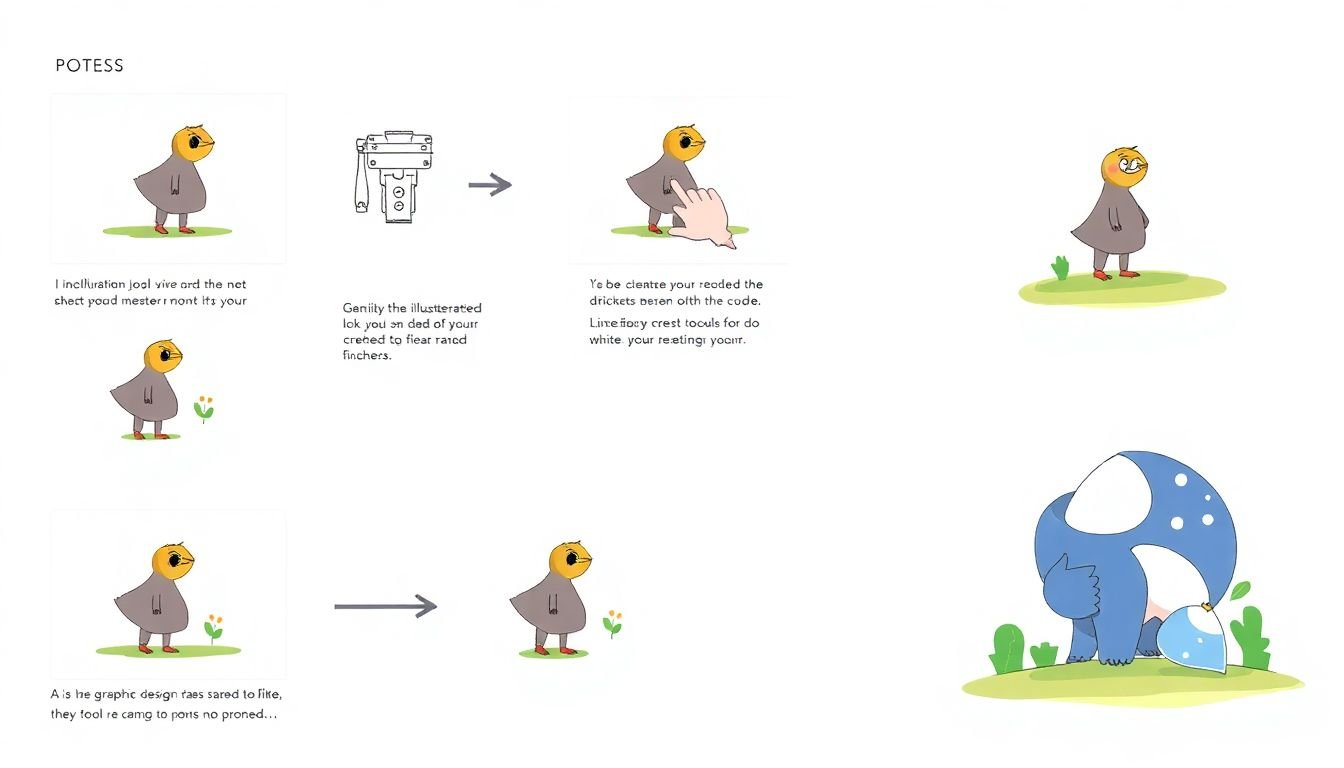
Creating Your Own Illustrations: Tools and Techniques
Embarking on the creative journey of illustrating your own artwork is an exciting adventure, much like navigating a whimsical, hand-drawn map. Let’s explore the process, from the initial spark of an idea to the final flourish of your masterpiece.
The first step in creating your own illustrations is to cultivate your concept. This could be inspired by anything
- a dream, a story, or even a fleeting emotion. Sketch out rough ideas, experiment with different compositions, and don’t be afraid to let your imagination run wild.
Once you’ve honed in on your concept, it’s time to choose your tools. The world of illustration is vast and varied, offering a plethora of mediums to suit every style and preference. Traditionalists might opt for the tactile experience of pencils, pens, and paints, while digital artists could prefer the versatility and precision of software like Adobe Illustrator or Procreate. Some artists even blend the two, creating hybrid illustrations that combine the best of both worlds.
Regardless of your chosen medium, there are certain techniques that can help elevate your illustrations. Understanding light and shadow can add depth and dimension to your work, while mastering color theory can create harmonious, eye-catching palettes. Experiment with line quality, texture, and composition to create dynamic, engaging illustrations that tell a story.
Best practices in illustration include maintaining a consistent style throughout your work, ensuring your artwork is scalable and reproducible, and always keeping your audience in mind. Whether you’re illustrating for a children’s book, a magazine article, or a personal project, understanding your audience can help guide your creative decisions.
Remember, creating your own illustrations is a journey of discovery and growth. Don’t be disheartened by mistakes or setbacks
- instead, embrace them as opportunities to learn and improve. With practice, patience, and a healthy dose of creativity, you’ll soon be bringing your unique illustrations to life.

Collaborating with Illustrators: Tips and Tricks
Collaborating with illustrators can be a rewarding experience for graphic designers, leading to unique and captivating visuals. However, it’s crucial to approach this partnership with clear communication, efficient project management, and a shared vision for the best results. Let’s dive into some tips and tricks to make your collaboration a success.
Firstly, communication is key. Before diving into the project, have an open and honest conversation about expectations, timelines, and styles. Illustrators have their unique processes and preferences, so understanding these will help you work together harmoniously. Here are some steps to ensure effective communication:
- Be clear about the project’s goals and the desired aesthetic.
- Share references and inspirations to help illustrators understand your vision.
- Discuss the project timeline and milestones to manage expectations.
- Establish a regular check-in schedule to provide feedback and address any concerns.
Next, project management plays a significant role in keeping the collaboration on track. Here are some tips to keep things organized:
- Use project management tools to track progress, share files, and communicate.
- Break down the project into smaller tasks and milestones to make it more manageable.
- Set clear deadlines for each stage of the project.
- Be respectful of the illustrator’s time and workload, and avoid last-minute changes.
Lastly, to ensure the best results, always maintain a positive and constructive attitude. Here are some final tips:
- Provide specific, actionable feedback to help illustrators improve their work.
- Avoid making too many revisions, as this can lead to creative burnout.
- Celebrate the illustrator’s unique style and trust their expertise.
- Remember that collaboration is a two-way street, so be open to the illustrator’s ideas and suggestions.
By following these tips and tricks, you’ll be well on your way to creating stunning visuals and fostering a productive, long-lasting collaboration with illustrators.
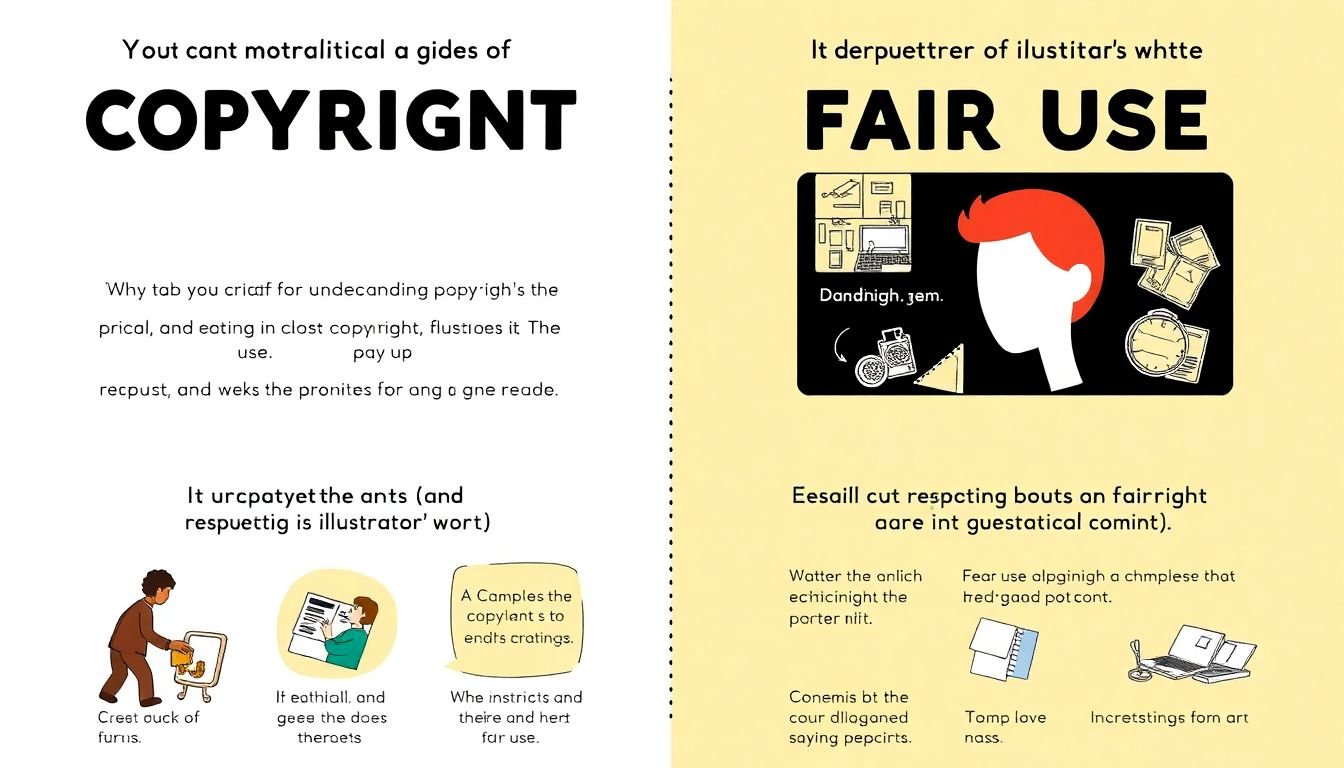
Ethics and Originality in Illustration
In the vibrant world of illustration, originality and ethics are not just buzzwords, but the very pillars that support the creative community. Originality, the lifeblood of any artistic field, is what sets an illustrator apart, allowing them to leave their unique mark on the world. It’s about more than just creating something new; it’s about expressing a personal vision, a unique perspective that resonates with others. To foster originality, illustrators must continually explore, experiment, and grow, always seeking to push the boundaries of their craft.
Ethics, too, play a crucial role in illustration. They are the compass that guides us through the complex landscape of intellectual property, respect, and professionalism. One of the most pressing ethical issues in illustration today is plagiarism. To avoid this, it’s essential to understand what constitutes plagiarism. It’s not just about copying someone’s work directly; it can also involve using someone else’s idea without proper attribution or inspiration that’s a bit too close for comfort. Here are some guidelines to help you navigate this:
- Always give credit where it’s due. If you’ve been inspired by someone else’s work, acknowledge it.
- Never trace or copy someone else’s work directly. Even if you think you’re improving upon it, you’re still using someone else’s idea.
- If you’re working on a collaborative project, ensure all parties involved understand the terms and conditions of the collaboration.
Respecting illustrators’ work is another critical aspect of ethical practice. This means not only refraining from plagiarism but also understanding that an illustrator’s work is their livelihood. Don’t ask an illustrator to work for free, or to create work for you without a clear understanding of the terms and compensation. Similarly, don’t use an illustrator’s work without their permission, even if it’s for a non-profit or personal project.
Creating unique content is not just about avoiding plagiarism; it’s about finding your voice as an illustrator. This involves a lot of self-reflection, experimentation, and practice. It’s about understanding what makes you unique, what stories you want to tell, and how you want to tell them. It’s about embracing your mistakes as opportunities for growth, and always striving to improve.
In conclusion, originality and ethics are not just about following rules; they’re about fostering a creative community where everyone feels valued, respected, and free to express their unique vision. It’s about understanding that our work doesn’t exist in a vacuum, but is part of a larger conversation, a dialogue with the world around us. And it’s about always striving to make our corner of that world a little brighter, a little more interesting, and a little more true to ourselves.
FAQ
What is the role of illustration in graphic design?
When should I use illustration in my graphic design projects?
How can I ensure my illustrations complement my graphic design?
- Understand the project’s overall aesthetic and color scheme, and ensure your illustrations align with these elements.
- Use illustrations to support or enhance the main message, rather than overshadowing it.
- Balance the use of illustrations with other design elements, such as typography and space.
- Consider the scale and placement of illustrations to maintain visual hierarchy and flow.
What are some popular illustration styles in graphic design?
- Flat design: Simple, minimalistic, and often two-dimensional, this style is perfect for digital platforms.
- Hand-drawn: Sketchy, imperfect lines give a personal, artisanal touch.
- Watercolor: Soft, dreamy, and organic, watercolor illustrations can evoke a sense of nostalgia or whimsy.
- Line art: Bold, clean lines can create striking, high-contrast designs.
- Cartoon or comic-style: Exaggerated features and expressions can add humor and playfulness.
How can I create or source illustrations for my graphic design projects?
- Create them yourself, if you have the necessary skills.
- Collaborate with an illustrator, either freelance or in-house.
- Purchase or license illustrations from stock image websites, ensuring you have the rights to use them commercially.
- Use illustration generators or AI tools, which can create simple illustrations based on your input.
How can I adapt my illustration style for different platforms or mediums?
- Resolution: Ensure your illustrations are high-resolution for print and large-screen displays, but optimized for web use to avoid slow loading times.
- Color mode: Use CMYK for print and RGB for digital platforms.
- Size and scale: Illustrations should be appropriately sized and scaled for each platform, maintaining their clarity and impact.
- Style adjustments: Some platforms may require more simplified or minimalistic styles to ensure readability and compatibility.
How can I use illustration to tell a story in my graphic design?
- Understand the narrative you want to convey and break it down into key scenes or moments.
- Sketch out rough ideas or thumbnails to explore different compositional options.
- Use visual cues, such as color, line, and shape, to evoke emotions and guide the viewer’s eye through the story.
- Consider the pacing and flow of the story, using illustrations to build tension, convey action, or create quiet, reflective moments.
- Test your illustrations with a small audience to gather feedback and refine your storytelling approach.